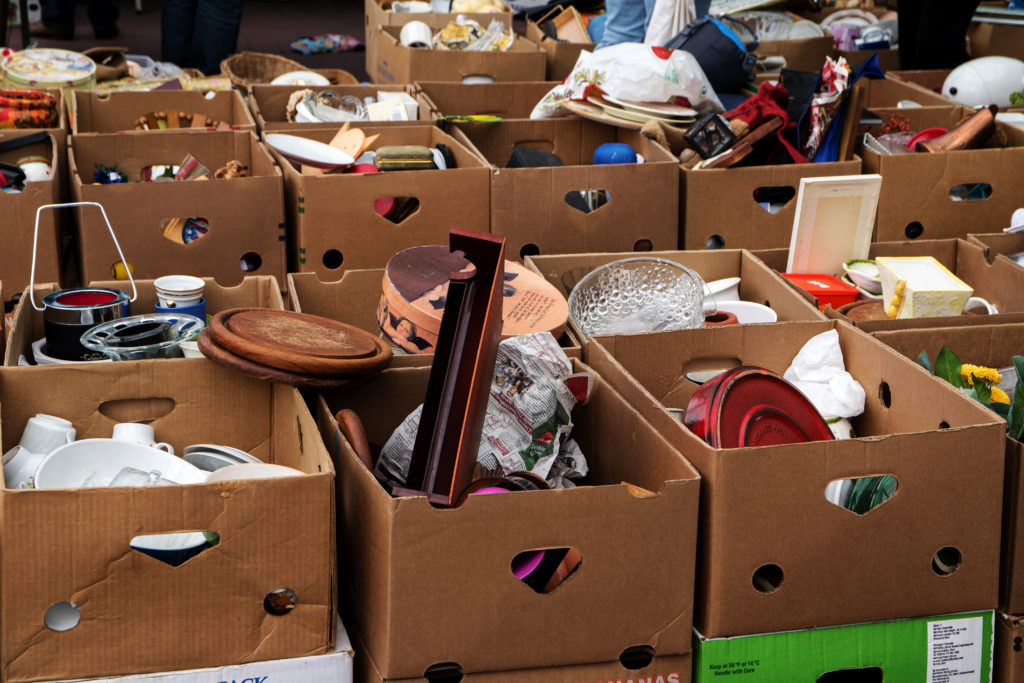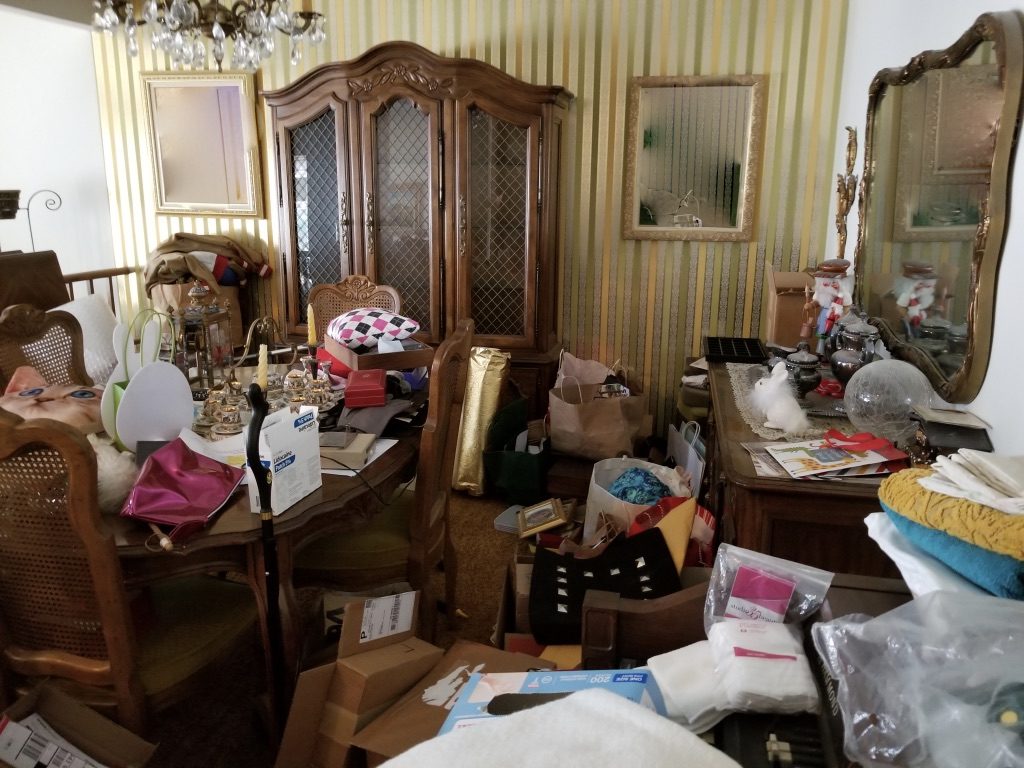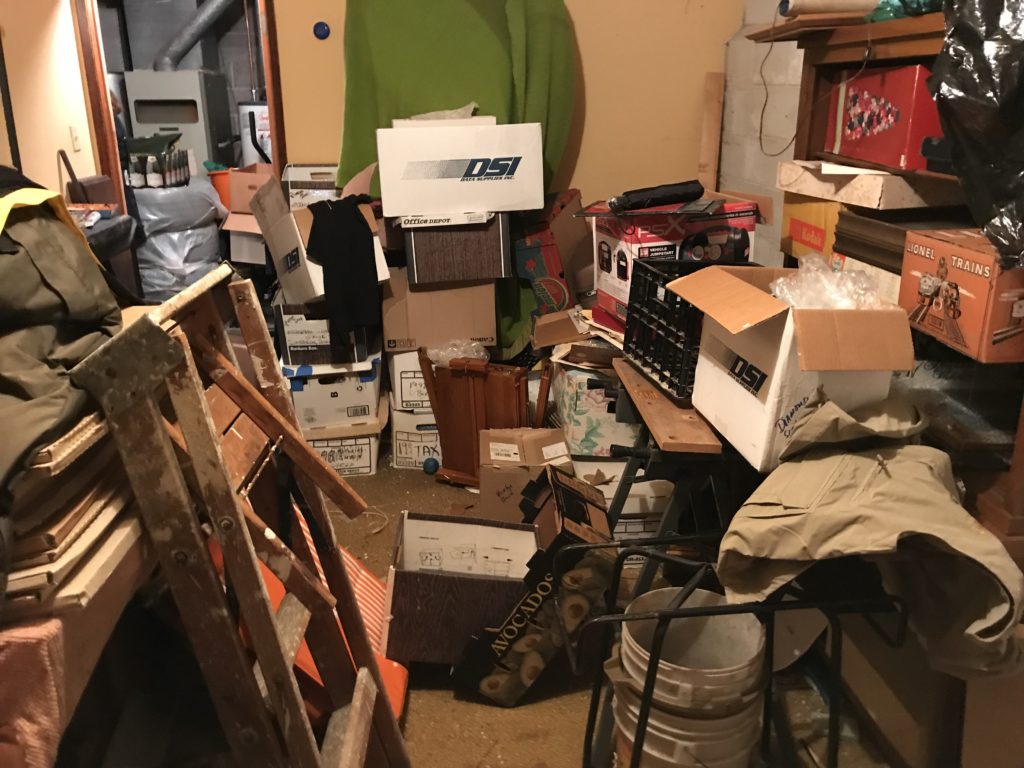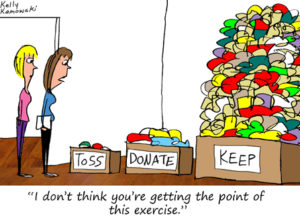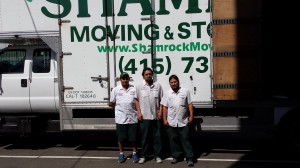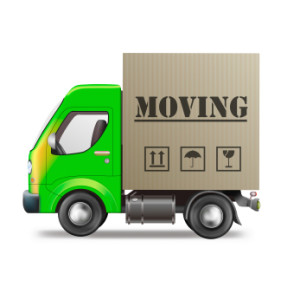Lis Golden McKinley, M.A.
Certified Professional Organizer
Owner, LET’S MAKE ROOM, LLC
It’s time. You’ve set aside the day, taken off work, brought in the garbage bags and the packing boxes. No more excuses. It’s you versus the clutter. This time you intend to win because you’ve decided to put your house up for sale.
The late comedian George Carlin used to say,
“Your house is just a place for your stuff. If you didn’t have so much G-D stuff, you wouldn’t need a house!?”
But what happens when your stuff is too connected to memories? Carlin joked no one wants that stuff either but guess what they do!
When I say stuff, I don’t only mean furniture and household items. I mean the sentimental stuff you’ve buried in your closet or shoved into the back of an attic or basement. Stuff like your son’s grade school artwork, even though he’s in college now. Grandpa’s set of World War II history books. The two crocheted baby blankets grandma made for your kids.
“Keep them for the grandkids!” You protest and back into the closet it goes. Except you have way too much in your closet already. So instead you pay hundreds of dollars a month to store stuff you can’t bear to part with at the local public storage.
That’s when it hits you. It’s not only your house you have to downsize, but your storage unit too.
Exasperated, you slump down in your arm chair and wonder, “how am I going to do this?” and pour yourself another glass of wine.
As Baby Boomers get older – and by the way, I’m one of them — they start thinking about their health and the desire to simplify their lives.
75% of people who want to downsize their lives say they can’t. The reason? They have too much stuff, according to research conducted by Kansas University.
The number one reason baby boomers can’t declutter is they are often sentimentally attached to what they own. There are just too many painful decisions that have to be made about what to keep or go. “No thanks,” they utter, “I’d rather have a root canal.”
The good news is you don’t have to throw the baby-doll out with the bathwater. Instead, you can actually feel good about letting go. Less regret, guilt or incurring the wrath of your family.
It is important to remember that not everything you are sentimental about has to go. Instead, the key is taking the time to curate your collection of sentimental items and giving away what you don’t want to the right people (or places).
Curating is about deciding what is going to be part of your permanent collection and what isn’t and where it can go. It also includes saying goodbye, with gratitude, to the things that have served out their purpose and forgiving yourself for doing the best you can to dispose of them responsibly.
As a Certified Professional Organizer and Move Manager based in Oakland, California, I have helped hundreds of clients achieve their own vision of a more simple and organized life for retirement.
Part of this process always involves making decisions about the items we most commonly get attached to: Books, clothing, photographs, sentimental cards and letters, memories – both ours and our kids.
When it’s time to curate these items, I find it useful to think about them in three ways:
- Say goodbye with gratitude
- Keep for my new life
- Give to others
Say goodbye with gratitude
This collection contains items that are damaged beyond repair or are not worth your time or money to repair.
You can appreciate what they were in their original form and know that their time has come to an end. Anything that still makes you sad to let go of, you can take a picture of. That way you will still have the memory of the item.
Keep for my new life
This collection contains your favorites. Items you love so much you would use or display again. The ones that you would remember and miss if they disappeared. Better yet, they are the ones that fit into your new, simplified lifestyle. These are the best of the best!
Give to others (or giving items new life elsewhere)
This collection contains both high quality and useable quality items you don’t want. They could be of a high enough quality you could sell or consign them, or special enough that you would prefer to give them to a particular person or organization. In other words your decision to let them go is contingent on them getting to the right recipient or organization. This collection also includes useable quality items that could be donated to charities such as Goodwill, Salvation Army or Out of the Closet
If they are not sellable but the recipient is important to you, do an online search by type in your area. For example “Senior center thrift shop near me.” There’s a wonderful place in San Francisco called SCRAP that accepts donations of all types of craft and teaching materials (though they are closed temporarily due to Covid-19). Here are a few other examples of unique places to donate your higher quality items. (Due to Covid-19 some of these will be temporarily closed. Check before going.)
- Senior center thrift shop
- Church, school or charity auction
- Thrift shop for a charity you support such as cancer research
- Local animal shelter
- Children’s thrift shop for low income moms
- Re-use/repurpose non-profits
There are also online websites such as Nextdoor.com where you can post your unwanted items. Be careful not to post your personal information. Instead ask people to direct message you if they want your item.
Use “Say goodbye with gratitude,” “Keep for my new life” and “Give to others” with other types of sentimental items you have. Here are few tips for downsizing other sentimental household items:
Books
(If you are downsizing and you have an excess and need space)
First decide on the greatest number of bookshelves you will keep so you will know how much you need to downsize.
Keep books you still refer to or hold special memories or can’t find online.
Donate duplicate books, books you’ve never read, are not likely to read or don’t hold interest for you. Also donate books from a previous chapter of your life. Someone is bound to appreciate them. Take them to your local library or college. Most Goodwill stores will also accept books for donation but not text books.
Recycle any that have mold. Mold travels and will contaminate other books.
Sentimental Cards and Letters
(If you have more than will fit into a banker box or small suitcase)
These are often the hardest to let go. Keep the ones that express a personal sentiment to you, not a generic greeting. You can also photograph these and let the physical card go.
 Toys and Childhood Memorabilia
Toys and Childhood Memorabilia
(Yours or your adult children)
This is the stuff you’ve tossed in a “keep” box but never looked at except when you’ve moved. It could be anything from rocks you collected, to tickets stubs, to small medals you received as a kid to souvenirs from family trips.
They best represent the “memories” of your childhood. It’s likely none of it is valuable, unless it’s in its original packaging and in pristine condition. If you’re not sure, you can always check sites like Etsy or Ebay.
First sort those into two piles – usable quality and higher quality. As you come across anything that that you don’t want but are afraid of forgetting, take a picture of it! That way you will always have the memory.
If the items are small, you can display them in a large fishbowl, brandy snifter or inside a shadow box. I’ve seen these for just about out every imaginable collectible: medals, matchboxes, toy cars, record albums, sports memorabilia even old postcards.
Check out some “memorabilia storage” ideas on Pinterest or Etsy If you’re not up to this, ask someone in your family who has a talent for crafts or art to do it for you. What a perfect birthday or Christmas present!
If you wouldn’t pay to have the items repurposed into something new, chances are you don’t love it enough to keep it. You can always take a picture of it if you’re scared of losing the memory. If it’s a small quantity of items you are keeping, give them a home in a small treasure box. I always think of a the little cigar box the character Scout kept under her bed from the film version of To Kill a Mockingbird. 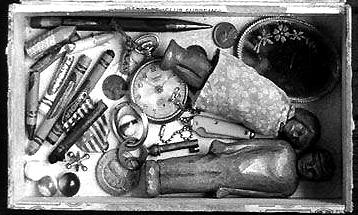
Giving away sentimental items to the right place or person is what makes it possible for you to let them go
Don’t use your kids as a reason to keep stuff that you don’t have room for in your new home. If possible, ask them to come and get it by a certain date. If they live far away or don’t care, let them know your plan to donate whatever is usable. Keep your favorites, the ones you consider “heirlooms” and limit them to no more than will fit into a small bin or box. Your kids won’t miss the rest and neither will you.
A final note about trash, landfill and forgiveness
It’s likely you will have to throw out more than you intended. Recycle as much as you can but accept the limitations of what is and is not recyclable in your community.
When you bought it 30 or 40 years ago, you weren’t thinking about whether it was recyclable. You needed it and it served its purpose. Again, dispose of it with gratitude. If it has to go to landfill, forgive yourself. Know that you have learned to be a more responsible citizen and consumer. Now you can enjoy and maintain your simple and spacious new life with the things you love the most.
Want to receive our Ultimate Home Move Checklist? Subscribe below:

